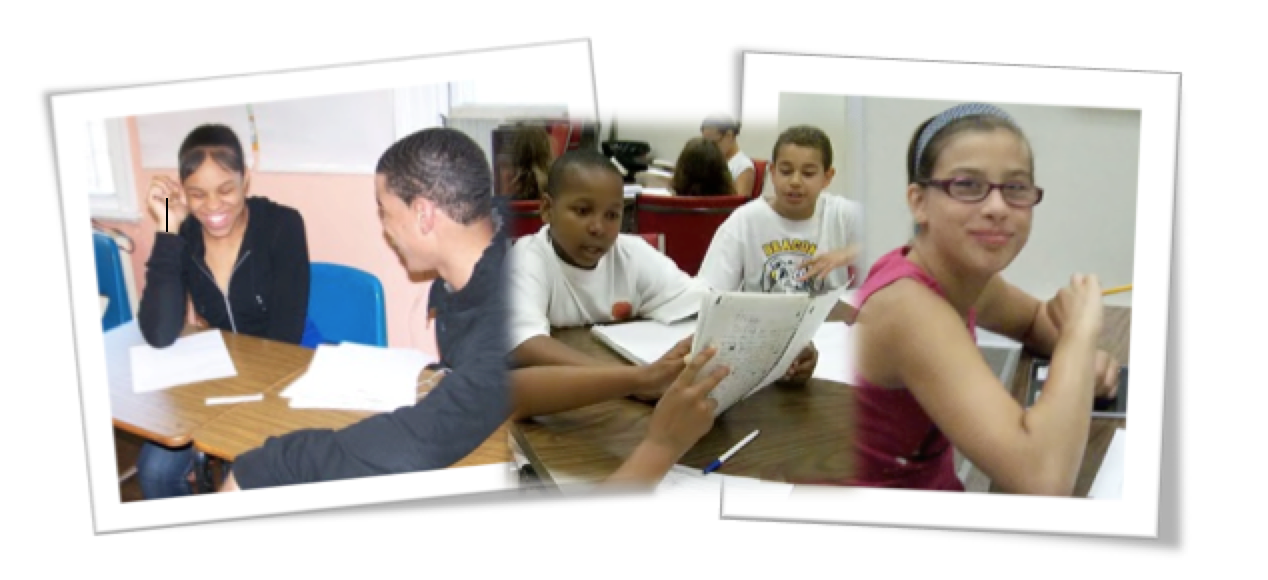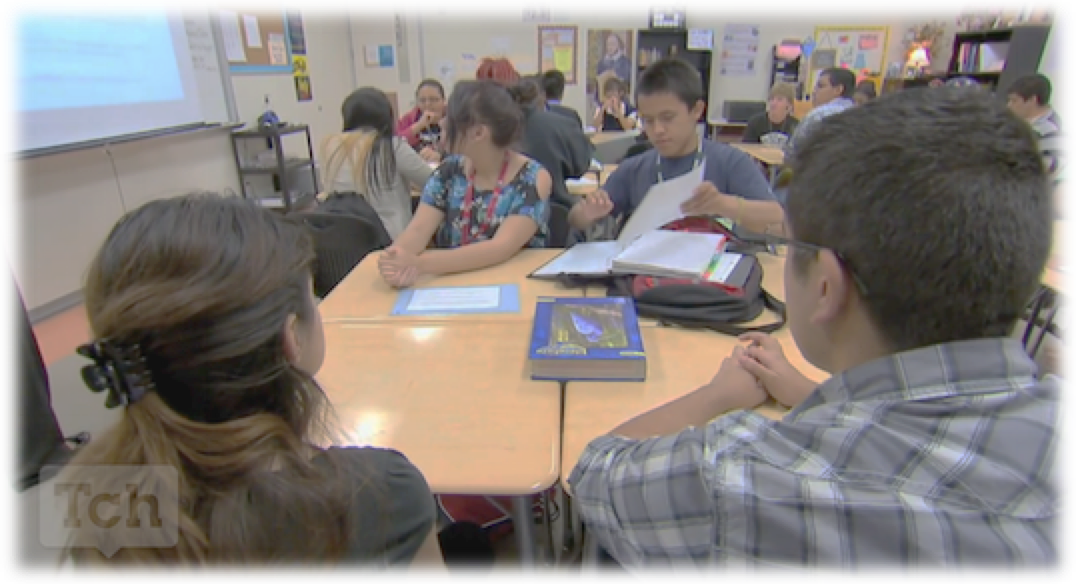Behavioral Supports Through Grouping and Collaboration
insert
1. Community Building
A solid sense of classroom community, with safe and responsive learning environments remain central to success in inclusive settings. This standard however, needs to be planned for and distributed equitably among all students, with fair and equal expectations. Enhancing the classroom environment was the objective for the authors of this article on classroom management in inclusive settings, with many practical, research-based application strategies as takeaways.  Policies, strategies, and curriculum supports are the necessary stables of a truly inclusive learning environment that promotes membership, friendships, and collaboration (Soodak, 2003).
Policies, strategies, and curriculum supports are the necessary stables of a truly inclusive learning environment that promotes membership, friendships, and collaboration (Soodak, 2003).
Inclusiveness focuses on belonging, membership, and acceptance. In the past, inclusiveness for disabled students meant that they could participate in certain instances with their non-disabled peers. This however, led to a tracking out of mainstream education for many, creating a bias in its own right. As a result we have inclusion, where students participate full-time in age-appropriate general education classes (Soodak, 2003). Rather than focusing on student placement, the focus of inclusion includes the environment in which students learn, supported by policies, procedures and practices. When we place conditions on student participation, we undermine the classroom community; rather, students should be invited into learning equally by virtue of environment, engagement, and curriculum support. This tells them that they are all equal and rightful members of a class, and this membership has been proven to work toward student success without sorting, tracking, grouping, or categorizing them (Delpit, 1998; Sialor, 2002).
Soodak (2003) recommends the following focus to facilitate effective, participatory classroom environments that reflect the virtues of inclusiveness:
- Promoting Membership
- Facilitating friendships
- Collaboration
- Supporting positive behavior
- Proactive response to misbehavior through school-wide use of positive behavioral supports
Facilitating Membership
Students need to feel like they are members of a community, not any different than we need to view ourselves when we work in cohorts, as a team, or in professional learning communities. The authors of this study (Soodak, 2003; Soodak & Erwin, 2000) discourage assignments to heterogeneously groups. They suggest instead that clubs be formed on the basis of interest rather than skill or ability level. They encourage the inclusion of policies and practices that are inclusive in  nature, without conditions for participation. Writing clubs for instance, are often only open to students who do well on the writing assessments, or exhibit success in school. Why shouldn’t they be open to all students? Often students who wouldn’t come to a writing club on their own, or be placed in one by virtue of classroom performance, can become highly inspired to write with participation in a writing club, thereby improving their writing skill with practice, interest, and renewed enthusiasm for the genre (Ruckdeschel, 2010). This all flows into, and out of, a teacher’s expectation for success. If he or she is in a writing club, he or she must be a good writer. Or, if she or he has qualified for a writing club, the writing must be good.
nature, without conditions for participation. Writing clubs for instance, are often only open to students who do well on the writing assessments, or exhibit success in school. Why shouldn’t they be open to all students? Often students who wouldn’t come to a writing club on their own, or be placed in one by virtue of classroom performance, can become highly inspired to write with participation in a writing club, thereby improving their writing skill with practice, interest, and renewed enthusiasm for the genre (Ruckdeschel, 2010). This all flows into, and out of, a teacher’s expectation for success. If he or she is in a writing club, he or she must be a good writer. Or, if she or he has qualified for a writing club, the writing must be good.
Facilitating Friendships
Equally as important as membership is friendship and the facilitation thereof. To be truly inclusive, a school must place equal value on the social as the academic outcomes for students. This is where friendship matters most. In addition to inviting parental involvement, an emphasis on friendship will foster important skills and attitudes that flow into their quality of life, both in and outside of the classroom. This in turn fosters enthusiasm for learning, and can offset any negative social effects of isolation that might preclude academic achievement (Meyer, Park, Grenot-Scheyer, Schwartz, & Harry, 1998).
Strategies for including friendship in schools:
1. Select activities that involve cooperation and collaboration versus competition.
2. Create rituals that involve all members of the class, such as in meetings, friendship circles, or focused clubs (after school reading and writing clubs for example).
3. Use literature that involves themes of friendship and belonging.
4. Set up classroom rules that encourage respect, for example waiting in turns, active listening, and using protocols for peer coaching with phrases to use when communicating about projects with such as, I liked how your opening grabbed the reader. Have you tried using dialogue too? or, I don't understand how that process worked. Can you explain it to me again? Inclusiveness is key.
5. Facilitate collaboration among teachers and their students. When students can see it and sense collaboration among their teachers, they'll assimmilate it easier amongst themselves. When teachers know how to work cooperatively among their own, they'll know that much more how to facilitate it for their students.
6. Planning, teaching and support for students is where effective facilitation of inclusive environments begin. They characterized by the following (Villa, Thousand, Nevin & Malgeri, 1996):
Sufficient support for students and staff involves:
- Providing teachers with time to co-plan and reflect on teaching by observing one another and giving feedback (peer coaching)
- Collaborative teaching with plenty of development time
- Sets of rules
- Designated responsibilities and privileges related to collaboration
- Offering pre-service and in-service opportunities for training in collaboration
7. Policies and procedures that affect families are also important to establish, with parental participation at the forefront.
8. Possibly correlated to parental involvement. Because parents of special education children must be given the opportunity to collaborate in decision-making regarding placement, instruction and other services provided to their children (IDEA, 1997), the following are recommendations for positive supportive behavioral strategy:
Positive Behavioral Supports
Positive behavioral supports are alternatives to traditional punishment of student behaviors. They don’t however, always contribute to, or foster, an environment of civility or social community. Here are the recommendations:
- Catch them when they are behaving well and applaud it when it is observed.
- Teach and model the traits of good behavior.
- Use traditional methods of consequences, as long as those consequences “fit the crime” for the misbehavior.
- Use a problem-solving approach to behavior management by analyzing the situation through functional behavioral assessment, which allows for understanding of a student and separating out of behaviors in order to develop an action plan to change the behavior through alteration of the environment (Knostner & Kincaid, 1999).
Example: A sixth grade student expresses anger in inappropriate ways, becoming verbally upset, and physically violent at times. It was noted that whenever small groups were formed and in transition time that this student became most upset, frustrated and thus aggressive with angry behaviors. The child study team met and discussed reasons (made hypothesis) about the behavior, concluding that she felt frustrated with the uncertainty of what was expected following the transition. The student was supported with verbal directions before transitions, along with allowing a friend to transition her to a new seat or group. She was also invited to speak individually to, and confidentially with, a teacher prior to or after any transition time, or any other time she felt angry or frustrated.
- Diffuse misbehavior and redirect it by providing other choices as to what might have been done differently, or how to do it differently in the future.
- Allow behavior choices to reflect natural consequences, such as changing of materials used or a reworking of an assignment that might have been defaced. Avoid punishment and harsh consequences; they might resolve or reduce the problem in an immediate sense, they often disengages the student rather than helps them teach them to behave different by presenting them with options.
- If it is needed to remove a student from class, only remove for a short time period such as a few minutes, which can seem long to a child.
- Rephrase negative behavior by appropriately stating your disappointment in non-shaming ways to avoid inciting more anger.
- Remind students of established rules and expectations because they often forget them. Address recurring behaviors proactively by restating these rules as needed to systematically support positive behaviors.